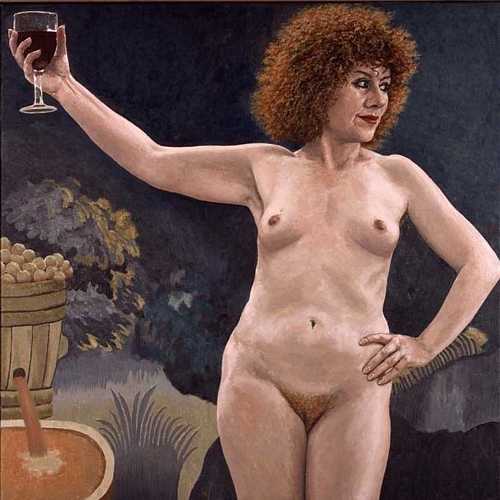9. Pastoral magical
I won't forget the first time I met the artist David Inshaw. I had just arrived at the house of a friend in the country. 'Take a drink and go into the garden,' she said. So I did. And that was when I saw him: suspended as if by magic against a summery sky, a few evening clouds drifting idly beyond him, his stretching arms floating upwards, out- spread for the Moon. In fact, it was all perfectly explicable. Inshaw was on a trampoline and I had happened upon him at the pinnacle of an exuberant bounce. But the image could so easily have come straight out of one of his paintings. It could so easily have been one of the 'Moments of Vision' referred to in the title of his exhibition at Agnew's in London. Because one of the things that makes Inshaw's work so distinctive is his ability to see magic in things that might otherwise seem mundane. A barn owl, caught for a second in the glare of a car's headlights, turns suddenly into some emblematic creature, a crepuscular spirit haunting a dark country lane. A cat can become some ghostly grimalkin; a woman: a mermaid, a temptress or a muse.
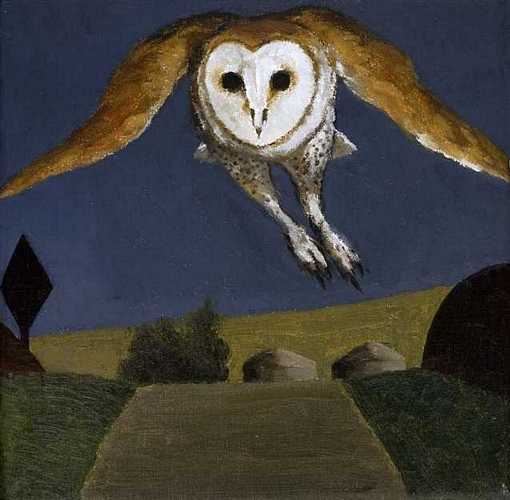
Anyone who has seen Inshaw's perennially popular The Badminton Game in Tate Britain will understand. This painting of two women with long flowing tresses and floaty dark red dresses playing badminton amid the topiaried grounds of a red-brick Georgian house seems more like a dreamscape than a rural idyll. The painting was inspired by the landscape around Devizes in Wiltshire where Inshaw, lured by the ancient earthworks at Stonehenge and Avebury, went to settle when he was in his late twenties and – apart from a spell in Cambridge and a few years on a small- holding in Wales – has remained since. 'Everything in the picture was taken from near my house in Devizes and rearranged in its right place,' he says. 'But I changed everything at the same time in order to increase the mystery and wonder I felt around me in this magic place.'
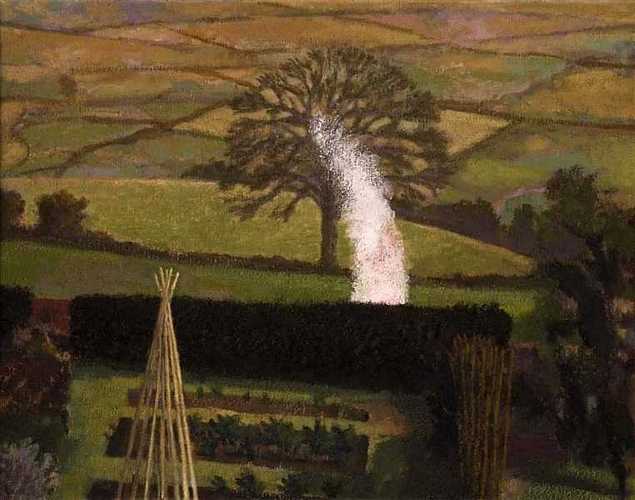
Inshaw is still alert to this magic. Picking me up at the station to take me back to his studio, we pass through the Vale of Pewsey and he points out all the features, including the hilltop tumulus known locally as Adam's grave. 'It looks so like a nipple on a breast,' he observes. And often, in the evenings, he climbs up to sit on it, looking out across the landscape. 'It's so sensuous, this soft, undulating downland,' he says. 'It's so wonderfully feminine.'
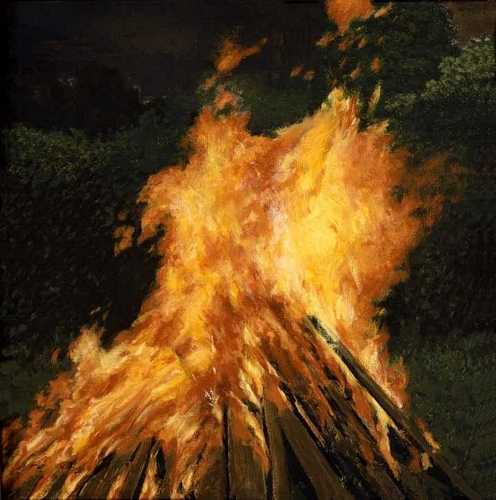
It's probably no coincidence, then, that it was a woman who first lured him into this landscape. Inshaw had reached a point in his career when he felt stuck, when his student experiments at the Royal Academy with the then highly fashionable Abstract Expressionism had failed him. 'It was totally against my nature,' he says. Taking a job as a teacher at Bristol – 'I taught enthusiasm, I suppose' – he was still searching for a way forward when he fell for a girl who introduced him to the woman who changed his life: Tess of the d'Urbervilles. Inshaw fell in love with Hardy's heroine. 'That book opened up a whole new world to me,' he says. 'The way that Hardy used landscape as a metaphor for human emotion struck a deep chord.' From then on he and a friend took trips every weekend into Hardy's Wessex. The world of Hardy's Wessex linked Inshaw to that of his own youth, to memories of a grandfather who lived off six acres, taking his vegetables to market on Dobbin the carthorse. 'It was my big treat, when the work day was over, to ride down to the fields on top of Dobbin.' He moved from the Midlands when he was seven. His father, a wartime bomber pilot who now worked for a chemical company but had kept up flying in his spare time, had been sacked for performing aerial acrobatics above a Birmingham munitions factory. They went to live in Biggin Hill in Kent and Inshaw spent his spare time collecting birds' eggs and catching slow-worms.
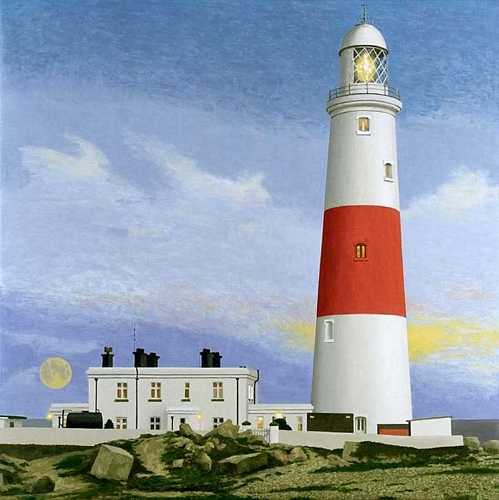
'I started to try and capture in paint my sense of the mystery of landscape, to portray it as freshly as I had felt it as a child. You have to retain that sense of freshness in painting in much the same way as you have to in sex – you have to try and keep a sense of its wonder, of its sensuality.' The lineaments of the landscape and intimations of erotic sensuality are intimately bound up in Inshaw's work. He lives alone, but he has been married twice. In The Badminton Game one of the models was his girlfriend, but he fell in love with the other woman while he was painting. Little wonder that the topiaried hedges have such a phallic presence. The scene is infused with a mood of erotic desire. 'I thought of painting my own face on the shuttlecock that they're playing with,' he laughs.
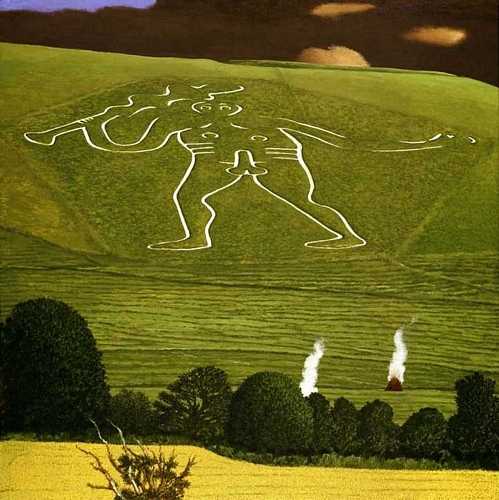
One of Inshaw's recent paintings features the Cerne Giant, an ancient symbol of fertility etched upon the landscape. 'I used to picnic on the giant,' he says. 'No one knows why he's there, but the fact that someone did him and needed to do him tells a lot about fecundity and the land and the nature of people's contact with that land.' This is the sort of contact that his paintings set out to make. Founding the Brotherhood of Ruralists in 1975, a loose group of seven like-minded painters (including Peter Blake) who met four times a year for the solstice, Inshaw sought to trace that 'most precious thread' in English art: the pastoral tradition. He left the group in 1983. 'It was becoming inward looking and incestuous and they wanted to paint things to do with Alice in Wonderland. I couldn't stand that.' Instead he still seeks the magic that impregnates his native land.
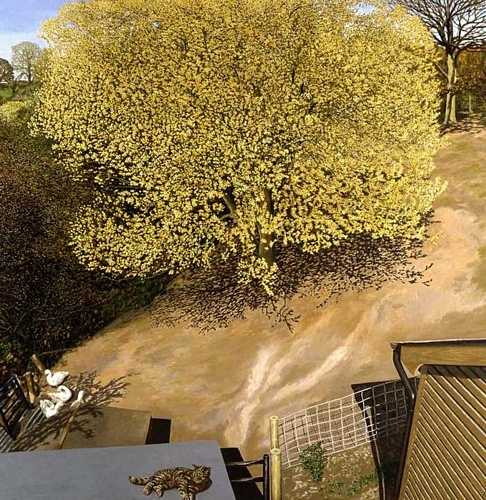
Each of Inshaw's paintings grows out of his life – quite literally, it seems, when you look at his studio. He lives and works in one room (though he is on the verge of moving to larger premises). 'I paint in the room that I sleep and eat and meet friends in, and all these things become part of the process of painting which is part of my life. That is why every element of the painting is significant, revelatory,' he explains. 'They contain my feelings and thoughts. They are paintings of this world, but also of the world of daydreams in my head.'
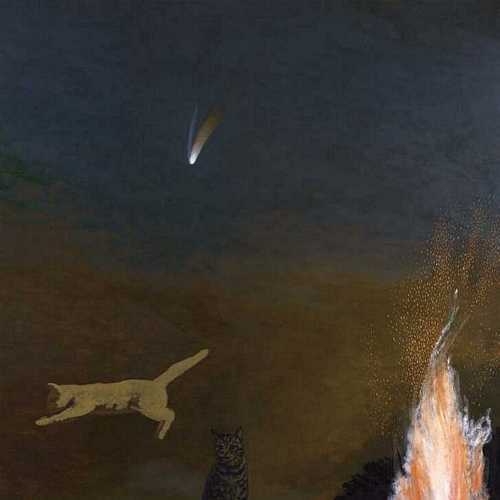
The cats are not just any cats; they are Inshaw's former pets. Likewise, the women are portraits of friends, lovers or wives. The view is not any view; it's the view of the woods out of his bathroom window when he was living in Wales. Every picture has its story. I look at a wonderful painting of West Bay cliff [Firework and Bonfire, West Bay]. A firework explodes above it, a great starburst of shimmering light. A fire burns beneath it, sparks snatched by the wind. 'I used to go up that cliff with my closest friend and his girlfriend Jessica when she was recuperating from a brain tumour. We would have to carry her up the slope. But I had just met a new girlfriend, Cheryl, and was passionately in love with her. So I painted that picture. The bonfire is for Jessica, like a beacon, and the firework is for falling in love with Cheryl.' You don't need to know the story to sense the joy of this painting, or to feel the loneliness that lurks beneath it, the alienation that underpins every moment of happiness. The personal becomes universal in Inshaw's work. People call his work naïve. They compare him to one of the artists he admires most: Alfred Wallis. 'I don't call Wallis's work naïve,' he says. 'I call it a deep understanding of what he's painting about.'
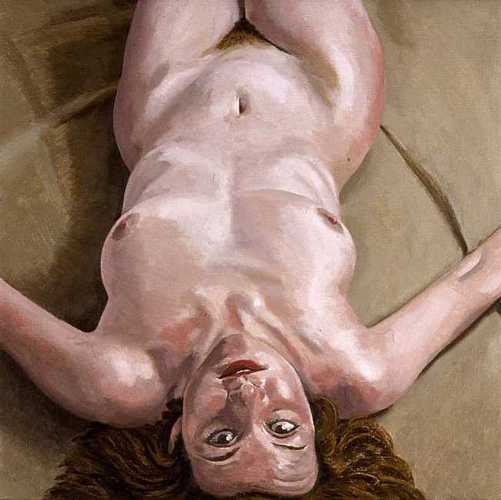
'My whole life is like a series of fragments that I try to hold on to,' Inshaw says. 'I try to pin down a moment, make it go on living. I am fascinated by the way in which things occur that last only for a moment and yet, at the same time, last for the rest of our life. I want my paintings to contain within them that moment but also to contain a larger understanding of time.'
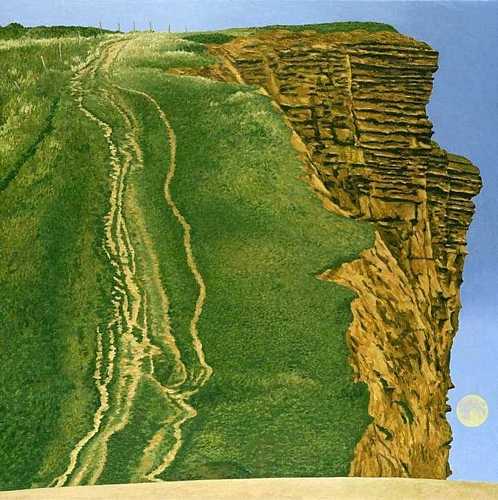
It is this sense of time that haunts Inshaw's paintings. 'The Moon has been there all the time,' he says, looking at a painting of East Cliff, West Bay, in which the Moon hangs beside the escarpment like some pale ghost, 'and yet it's not there all the time. The paths up the cliffs have taken years to make, but the fireworks that explode over them occur only in flashes. I want my pictures to be permeated by a sense of never and always.' Perhaps that's why you cannot pin down the mood of Inshaw's paintings. Perhaps the only thing you can know about this artist is that he's a true English Romantic. No wonder the first time I saw him he had his head in the clouds.
